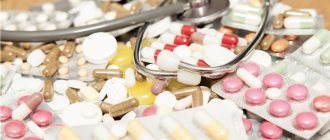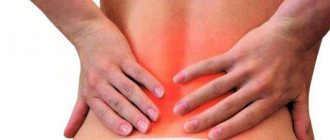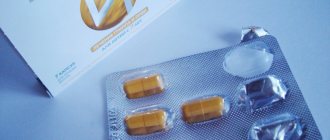With a sore throat, a person complains of soreness, scratching, irritation, discomfort, and a burning sensation in the throat. The throat is sore, it is difficult to swallow food, drink, these sensations intensify when swallowing or talking.
Sore throat may be accompanied by swelling of the throat mucosa, difficulty swallowing, soreness and enlargement of the cervical lymph nodes, the appearance of white or yellowish spots on the tonsils, coughing, sneezing, nasal congestion, runny nose, fever, chills, excessive salivation, muscle and joint pain, headache, nausea and vomiting, skin rash, loss of appetite, feeling of a lump in the throat, heartburn, hoarseness.
Causes of sore throat
Most often, a sore throat is associated with a viral infection (ARVI, influenza, Coxsackie virus, new coronavirus infection, chickenpox, measles). A sore throat caused by a bacterial infection (such as streptococcal infection) is less common. Other causes of sore throat include:
- tonsillitis (tonsillitis);
- epiglottitis;
- mononucleosis;
- paratonsillar, parapharyngeal, retropharyngeal abscesses;
- allergies (to pollen, mold, dust, animal hair and epidermis);
- dry air, air pollution (tobacco smoke, chemicals);
- breathing through the mouth with nasal congestion;
- spicy food, alcohol;
- overstrain of the muscles of the larynx and pharynx (during shouting, the habit of speaking loudly, lecturing);
- gastroesophageal reflux disease (GERD);
- malignant tumors of the tongue, throat, larynx;
- HIV infection.
Risk factors for a sore throat include: childhood and adolescence (usually bacterial infections), smoking (including second-hand smoke), frequent or chronic sinus infections (sinusitis), seasonal allergies or prolonged exposure to allergens such as mold, dust, pet hair, exposure to chemicals, weakened immunity (due to illness or treatment, for example, chemotherapy drugs).
Diagnostics
To make a diagnosis and find the cause of a sore throat, the doctor at the appointment compares the examination data with the patient’s complaints and, if necessary, conducts additional instrumental examination and prescribes tests.
Sore throats and other infectious and inflammatory diseases of the pharynx not associated with ARVI are usually treated by ENT doctors2. But, since pain in the throat can be a manifestation of non-infectious diseases, sometimes a consultation with a dentist, neurologist, psychotherapist, or endocrinologist is required2.
When should you see a doctor if you have a sore throat?
You should consult a doctor if the sore throat is severe and lasts more than 4-5 days, there is difficulty swallowing (breathing), difficulty opening your mouth, a rash on the skin, blood in saliva or sputum, temperature exceeds 38.3˚C, swelling is observed tongue or neck, pain in muscles and joints. A child needs to consult a pediatrician if his sore throat is accompanied by difficulty breathing or swallowing, stridor (noisy wheezing), or excessive salivation.
Diagnosis of a sore throat includes anamnesis, physical examination, if necessary, the doctor takes a culture from the throat (bacteriological examination), and conducts a universal rapid test for the presence of group A beta-hemolytic streptococcus in the throat.
A viral sore throat does not require treatment. To relieve associated symptoms, you can take ibuprofen or paracetamol (caution, do not give aspirin to children!), use anesthetic sprays or lozenges, gargle with warm salt water, drink plenty of fluids, and get plenty of rest. If a sore throat is caused by a bacterial infection, antibacterial drugs are prescribed, it is important to follow the doctor's recommendations regarding the duration of their use and dosage. For sore throat associated with allergies, GERD and other diseases, appropriate drug therapy is prescribed (antihistamines, antacids, proton pump inhibitors).
The reasons for visiting primary care doctors are varied, but there are clear leaders among complaints in different countries of the world. C. Finley et al. in 2022, analyzed more than 83,000 visits to doctors and identified five main complaints with which patients come to see [1]. In first place is a cough, in fourth place is a sore throat.
A sore throat can be caused by a variety of factors. These are also non-infectious agents: temperature changes, eating cold or very hot food and drinks, hypothermia, smoking, overstrain of the vocal apparatus, especially systematically.
Irritation of the mucous membrane of the oropharynx and palatine tonsils contributes to the development of inflammation, which allows viruses, bacteria and fungi to actively develop.
According to the World Health Organization, upper respiratory tract infections (URTIs) affect about 44% of the population every year [2]. In every fourth patient, the disease recurs and/or becomes chronic. In turn, inflammatory diseases of the pharynx account for up to 30% of the pathology of the upper respiratory tract [3].
Acute pharyngitis, as a rule, is one of the symptoms of acute respiratory viral infection (ARVI). Patients complain of a sore throat when swallowing saliva, the so-called “empty” swallow, a sore feeling, and rawness in the throat. These complaints usually appear against the background of hypothermia and are combined with other manifestations of ARVI - weakness, headache, cough, low-grade fever, rhinorrhea [4].
There are many factors that contribute to the frequent occurrence of acute pharyngitis. These include a decrease in local immunity, allergization of the body, metabolic disorders, the presence of concomitant chronic diseases, unfavorable working and living conditions, insufficient and unbalanced nutrition and much more. The surface of the pharyngeal mucosa, regularly exposed to microorganisms, represents one of the main routes for their penetration into the human body. Under normal conditions, pathogenic microorganisms are retained in the upper respiratory tract, while the lower ones remain sterile due to effectively working protective mechanisms (mucociliary and immune). As a result of the failure of these protective mechanisms, an inflammatory process develops. Most often, typical “respiratory” bacteria are found in foci of inflammation - pneumococcus, Haemophilus influenzae, moraxella, streptococci and, to a lesser extent, staphylococci. In the presence of chronic bacterial infections, the likelihood of developing a bacterial complication during ARVI increases significantly [5].
When the bacterial phase of the disease occurs, many patients are not prescribed systemic antibacterial drugs. The exception is infections caused by group A beta-hemolytic streptococcus. In most other cases, local antibiotic therapy is effective.
Bacterial inflammation, according to the recommendations of the Infectious Diseases Society of America, can be suspected if clinical signs persist for more than 10 days, symptoms intensify on the 3rd day, or after a short-term improvement, with a new peak of symptoms. All this suggests that there is no clear temporal distinction between the viral and bacterial phases [6].
Currently, the attention of clinicians is attracted to complex topical preparations. The absence of systemic effects and adverse events, on the one hand, and the ability to actively influence various parts of the pathological process at the level of the mucous membrane, on the other hand, contribute to the widespread use of these drugs.
One of these drugs is the drug "Doritricin", containing tyrothricin - a broad-spectrum antibiotic, benzalkonium chloride - an antiseptic and benzocaine - a local anesthetic.
Tyrothricin is a unique antibiotic that belongs to a subgroup of polypeptides synthesized by the bacteria Bacillus brevis; it is a mixture of cyclic and linear (aliphatic) polypeptides that have an antibacterial effect. The composition includes up to 70-80% tyrocidin - an alkaline cyclic decapeptide and 20-30% gramicidin - a neutral linear pentadecapeptide. The combination of these polypeptides, due to different mechanisms of action, allows tyrothricin to exhibit a wide spectrum of antibacterial activity, equivalent to the action of penicillin [7].
Tyrocidin has a high penetrating ability into the mucous membrane upon contact with it, exhibiting 2 mechanisms of action: suppression of protein synthesis in ribosomes and disruption of osmotic processes in the microbial cell membrane. Due to the first mechanism, the bacteriostatic effect of the drug is realized, and due to the second, the bactericidal effect is realized. Thus, pathogenic microorganisms must change their membrane composition and organization to achieve resistance, a very labor-intensive process that is further complicated by bacteriostatic effects that prevent bacteria from quickly adapting and defending themselves. Accordingly, the likelihood of developing resistance to this antibacterial drug is very low, which was proven by M. Stauss-Grabo et al. in 2014 by demonstrating the constant susceptibility of microorganisms to tyrothricin [8].
The mechanism of action of gramicidin is predominantly bactericidal and, like tyrocidin, is associated with disruption of the organization of lipoprotein systems and cell permeability created by the membrane. In addition, the listed mechanisms of action of tyrocidin and gramicidin prevent the formation of bacterial spores.
Many modern antimicrobial dosage forms for local use in the oral cavity and pharynx contain not only an antibiotic, but also an antiseptic. What is the advantage of this combination? First of all, the difference between an antibiotic and an antiseptic. The antiseptic acts superficially, preventing excessive bacterial colonization of the organ affected by the inflammatory process, and the target of its action is often not only bacteria, but also viruses, protozoa and other microorganisms. In turn, an antibiotic is able to penetrate inside a bacterial cell and cause more fatal disturbances in it, including death, but its spectrum of activity is more limited compared to an antiseptic and includes mainly bacterial flora. The combination of antibiotic + antiseptic is more attractive due to its complementary effect, enhancing the anti-inflammatory effect and reducing the dose of each of the drugs included in its composition to achieve a therapeutic effect.
The antiseptic in the drug "Doritricin" is benzalkonium chloride, which is an antiseptic drug that acts on gram-positive, gram-negative aerobes and anaerobic bacteria, and also has antifungal and antiprotozoal effects and an antiviral effect (herpes simplex virus). In vitro studies prove that, due to the triple combination, the drug Dorithricin also has a synergistic antiviral effect against the main respiratory viruses: HRV14, H1N1, RSV [9].
An important property of benzalkonium chloride is its ability to exhibit pronounced adhesion to the mucous membrane, due to which its effect continues even after the tablet is dissolved. This advantage, combined with the speed of onset of the effect (10 minutes), makes it possible to achieve a longer (within 3 hours) antiseptic effect compared to simple gargling.
It is also important that Dorithricin contains an anesthetic, benzocaine, which is an ester of ethyl alcohol that exhibits local anesthetic activity. The implementation of this effect is based on reducing the permeability of the cell membrane to Na+ ions, displacing Ca2+ from receptors located on the inner surface of the membrane, resulting in blocking the occurrence and conduction of nerve impulses. Bezonzocaine is practically insoluble in water, so its main advantage over other local anesthetics is its minimal absorption. This property allows us to minimize the risk of allergic reactions associated with the drug entering the systemic bloodstream. Upon contact with mucous membranes, the local anesthetic effect begins after 1 minute and lasts 20 minutes.
The treatment regimen with Dorithricin involves taking 1 lozenge behind the cheek every 3 hours. The maximum duration of treatment is 7 days. The drug can be prescribed to children from 6 years of age.
The use of the drug "Doritricin" has been confirmed in a number of clinical studies and is recommended for various infectious and inflammatory diseases in the oral cavity and pharynx. In particular, Scholten et al. (2005) showed its significant superiority over placebo in relieving inflammatory symptoms in patients with pharyngitis after 7 days of treatment. During the study, no adverse events or allergic reactions to the drug were recorded.
According to another placebo-controlled study, Eberhardt et al. (2004), which included 118 patients aged 18 to 70 years with a diagnosis of pharyngitis, 75% of those taking Dorithricin had pain in the throat relieved after 3 days of treatment, which was significant compared with placebo. The use of Dorithricin was well tolerated [10].
An observational study was conducted at our department. The observational study included 30 patients aged 18 to 65 years with a diagnosis of acute tonsillitis and/or acute pharyngitis. All patients underwent streptotest. Inclusion in the study was possible only after a negative result.
To assess their well-being, patients filled out daily visual analogue scales (VAS): assessment of sore throat at rest and when swallowing from 0 points - no pain to 9 points - very severe pain; discomfort rating from 0 points - no discomfort to 9 points - very severe discomfort; assessment of general health from 0 points - satisfactory to 9 points - very bad.
Rice. 1. Visual analogue scale: subjective assessment of sore throat.
Rice. 2. Visual analogue scale: subjective assessment of throat discomfort.
Rice. 3. Visual analogue scale: subjective assessment of the general well-being of patients.
By the third visit, all patients (100%) had no complaints, VAS score was 0.
During an objective examination of the patient, the doctor also noted the presence of changes according to the scoring system: hyperemia and swelling of the mucous membrane of the posterior pharyngeal wall, enlargement and tenderness of the cervical lymph nodes were assessed from 0 points - no sign to 9 points - a very pronounced manifestation.
Rice. 4. Objective assessment of inflammatory changes.
At the first visit, all (100%) patients showed hyperemia of the mucous membrane of the posterior pharyngeal wall ranging from 6 to 9 points; in 23 (77%) - swelling of the mucous membrane of the posterior pharyngeal wall from 5 to 8 points; 18 (60%) had enlarged/painful lymph nodes on the anterior surface of the neck from 4 to 7 points.
On the second visit, the condition improved in all patients, however, in 7 (23%) patients there was hyperemia/injection of the vessels of the posterior pharyngeal wall, which we assessed at 3-8 points; in 4 patients (13%) swelling of the mucous membrane of the posterior pharyngeal wall remained from 2 to 4 points (insignificant); 11 (37%) patients had an increase in painless lymph nodes from 3 to 5 points.
At the third visit, no patient (0%) had objective symptoms of inflammation.
At visit 2 (3rd day of treatment), after assessing the patient’s subjective and objective condition, we made a decision either to terminate therapy early or to continue it.
Thus, at visit 2, 22 (73%) patients were considered clinically cured and further therapy was discontinued. In 5 (17%) patients, we noted an improvement, but complaints persisted on a VAS scale of 4 to 5 points, reactive phenomena in the pharynx remained on a VAS scale from 3 to 6 points (minor), treatment was continued until the 6th day. Based on the results of a cumulative assessment of objective and subjective manifestations of the disease on VAS scales from 5 to 8 points, 3 (10%) patients were prescribed antibacterial therapy.
Rice. 5. The need to continue therapy after visit 2 (day 3).
During the follow-up examination, the patients had no complaints; inflammation in the oropharynx was relieved. All patients recovered.
Based on the results of the study, we can conclude that the use of the drug "Doritricin" in the treatment of patients with acute pharyngitis and/or acute tonsillitis has a pronounced clinical effect already by the third day from the start of treatment. Also, Dorithricin monotherapy allows reducing the use of additional medications and improves the quality of life of patients from the first days from the start of treatment. This drug has a high safety profile. No side effects were found during the study. Tolerability of the drug "Doritricin" was rated by patients as very good or good.
The authors declare no conflict of interest.
The authors declare no conflict of interest.
What is more effective: sprays, tablets or lozenges?
The choice of dosage form directly depends on the cause of the disease and the nature of the pain. In particular, if the sore throat is caused by bacteria, then the best choice is a spray with a pronounced antiseptic effect. It is important to consider that with prolonged use, infectious agents develop resistance to the drug, so if after 2-3 days you do not feel relief, the medicine needs to be changed. So, how to treat a throat?
For a disease of viral origin, it is best to choose a throat spray that relieves pain and fights inflammation. In the case of chronic pain, it is necessary to regularly irrigate the throat with a spray with a moisturizing effect that does not contain aggressive substances and carefully relieves unpleasant symptoms.
Many drugs reduce symptoms due to the local anesthetics they contain - phenol, benzocaine or dyclonine. Under their influence, the mucous membrane becomes numb, and the pain noticeably weakens.
Throat tablets can be divided into several groups. For example,
- with enzymes that eliminate viruses and bacteria;
- NSAIDs that relieve inflammation;
- with fragments of bacteria and viruses that enhance local immunity;
- with extracts of medicinal plants that reduce pain.
Throat lozenges are effective only in the initial stages of the disease. They usually contain menthol, which has a distracting effect rather than a therapeutic one. Therefore, you should not get carried away with candies.
TOP 5 sprays against sore throat
- Miramistin is a broad-spectrum antiseptic spray to combat bacterial and fungal infections. Quickly reduces pain. It is odorless and tasteless. Suitable for adults and children from three years of age, as well as for pregnant women. Disadvantage: relatively high price, analgesic effect lasts several hours.
- Hexoral destroys infections of bacterial and fungal origin. It has an analgesic, disinfecting, deodorizing and enveloping effect. The therapeutic effect occurs within 1-2 minutes after treatment and lasts 10-12 hours. Application: twice a day after meals. Cons: components of the drug can cause allergies, read the instructions carefully.
- Yox can be called an analogue of the legendary Lugol's drug. It has a powerful antiseptic, antiviral, antifungal effect. Reduces pain well. Processing Disadvantages: cannot be used for a long time, contraindicated for people with iodine intolerance.
- Proposol contains propolis extract and a large amount of vitamins. Complete disappearance of pain occurs within 5-7 days. It works well as part of a complex treatment of inflammation. Cons: not suitable for people allergic to bee products.
TOP 5 tablets for sore throat
- Faringosept copes well with pain and fights inflammation in the oral cavity. Has a pleasant sweet taste. Recommended course is 3-4 days. Quickly relieves pain and restores voice. The packaging is enough for a full course. There are few contraindications. Disadvantage: effective at the initial signs of the disease.
- Hexoraltabs contain a local anesthetic, peppermint oil and menthol. They have an antiseptic effect. A decrease in pain is observed during the first minute of resorption. Available in different flavors. Cons: the drug only helps with the initial signs of the disease.
- Neo-Angin has a pronounced disinfectant and anti-inflammatory effect, relieves pain well, quickly restores the voice, and relieves coughing attacks. Large packaging. Dosage: one tablet every 2-3 hours. The permissible number of tablets per day is six. Cons: irritates the gastric mucosa.
- Grammidin contains the antibiotic gramicidin C; tablets with lidocaine are also available, which not only destroy pathogens and cleanse the mucous membrane, but also immediately relieve pain. The anesthetic effect lasts about 40 minutes. Enhance the effectiveness of medicinal rinses. Disadvantage: cannot be taken during pregnancy and lactation.
- Lizobakt has a powerful antiseptic effect. The drug contains vitamin B6, which increases local immunity, and the protein enzyme lysozyme, which breaks down bacteria, fungi and viruses. Suitable for pregnant and lactating women. It is used for all infectious lesions of the oral cavity.
TOP 5 lozenges for sore throat
- Strepsils plus. The active ingredients fight bacteria, lidocaine reduces pain, anise and peppermint oils have a distracting and enveloping effect. Dosage: no more than 1 lozenge within 2 hours. Disadvantage: short period of action, effective at the initial signs of the disease.
- Halls. Due to eucalyptus oil and menthol, it temporarily relieves pain, cools a sore throat, and relieves hoarseness. Minus: it is not a medicine.
- Carmolis contains extracts of medicinal herbs, honey, and vitamin C. The drug quickly reduces pain, refreshes the oral cavity, has a pleasant taste, but does not last long.
- Gorpils quickly relieves pain and has a pronounced antiseptic effect. Helps with initial and acute forms of the disease. Available in different flavors. Disadvantage: short period of action.
- Agisept relieves pain, has a pronounced antimicrobial effect, and significantly reduces unpleasant symptoms at the onset of the disease. Disadvantage: not suitable for people with allergies to medicinal herbs.
These recommendations do not replace visiting a doctor. There are contraindications. Before purchasing the drug, be sure to consult with your physician.
Back to articles








